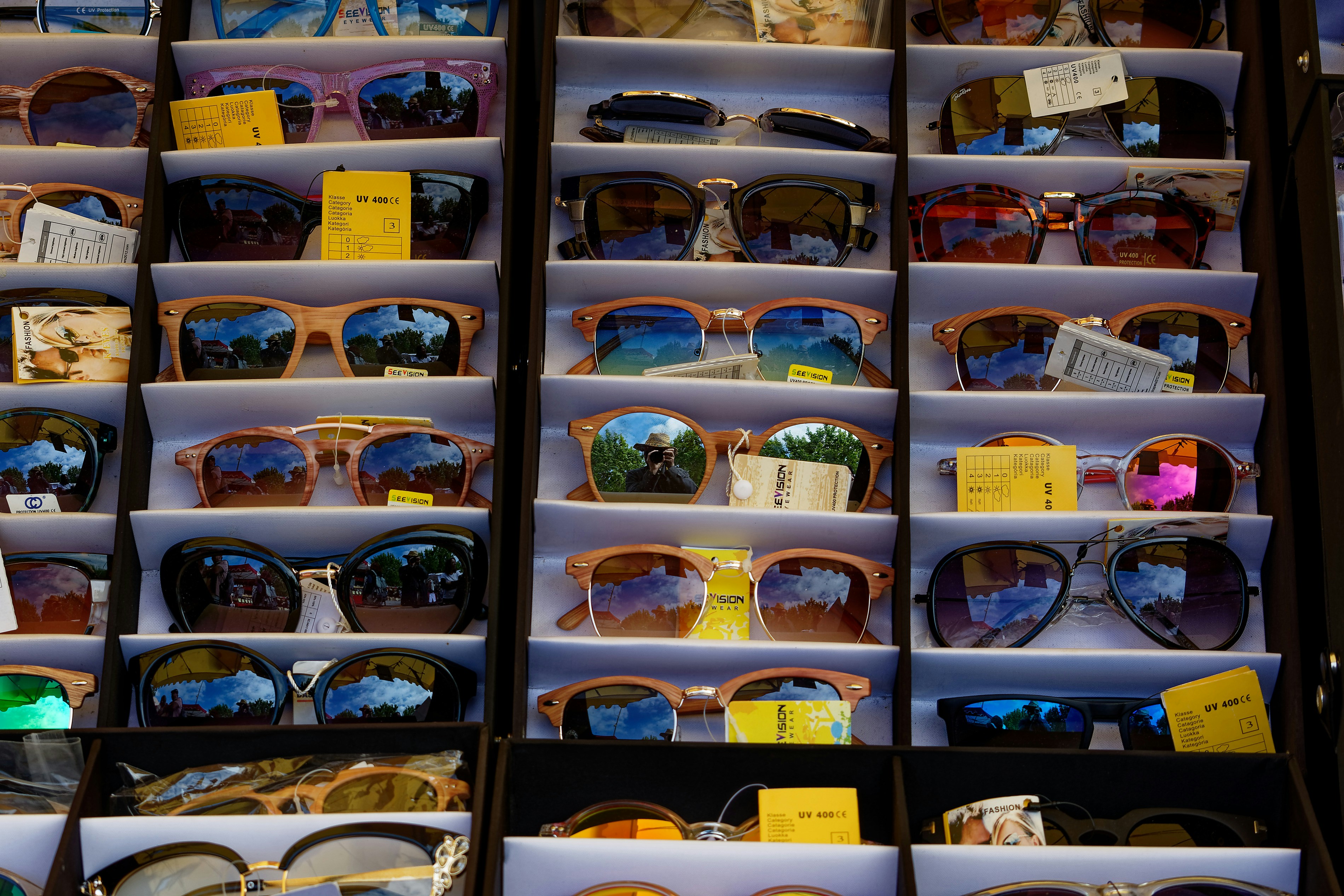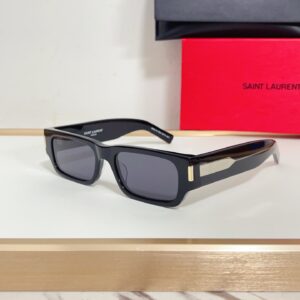Defining Replicas and Fakes
In the world of eyewear, particularly sunglasses, understanding the terms “replicas” and “fakes” is crucial for consumers looking to make informed purchasing decisions. Replicas are products that are designed to closely resemble an original brand’s offering. They aim to emulate the aesthetic and style of high-end sunglasses, often using similar materials and designs. However, it is important to note that replicas do not always infringe on trademark laws or intellectual property rights. Some replica sunglasses may even be of decent quality and are often made available at a fraction of the original price, appealing to those who seek a budget-friendly alternative.
On the other hand, fakes are typically low-quality imitations that unlawfully copy an original product. These counterfeit sunglasses infringe upon the intellectual property rights of designers and brands. Fakes are usually produced with inferior materials and craftsmanship, resulting in a subpar product that often lacks the functionality and durability of genuine eyewear. The production and distribution of fake sunglasses are illegal in many jurisdictions, subjecting manufacturers and sellers to legal repercussions.
The implications of dealing with replicas and fakes extend beyond quality concerns. Purchasing fakes can support unethical practices, including exploitation of labor and violations of environmental standards that often accompany manufacturing processes in illicit operations. On the contrary, while purchasing replicas may not always be illegal, consumers should still be mindful of the ethical considerations regarding intellectual property. By understanding these distinctions, consumers can better navigate the market for sunglasses and make choices that align with their values and expectations for quality.
Quality and Craftsmanship: The Key Differences
When it comes to sunglasses, distinguishing between replicas and fakes involves assessing quality and craftsmanship. Replicas, often designed to mirror high-end brands, generally employ superior materials and craftsmanship compared to counterfeit sunglasses, which frequently compromise quality to save costs. This section aims to elucidate the key differences in quality between these two categories.
Firstly, materials play a critical role in the overall quality of sunglasses. Replicas are typically constructed using durable and high-grade materials, such as polycarbonate or high-quality metal for frames, which contributes to longevity and comfort. In contrast, fakes often utilize cheap plastics and inferior components, resulting in a product that is less durable and potentially harmful. Poor quality materials can warp, break, or degrade over time, making fake sunglasses not only less functional but also risky for eye protection.
In terms of craftsmanship, replicas tend to exhibit a higher level of attention to detail. This can include precision in the alignment of lenses, consistency in coloring, and overall finish. Consumers may notice that replicas often feature well-polished edges and seamless frame designs, reflecting a commitment to quality and aesthetic appeal. Conversely, fake sunglasses may appear hastily produced, with uneven finishes, misaligned components, and even logo inconsistencies that can ultimately detract from their visual appeal.
Durability is another telling factor that sets replicas apart from fakes. High-quality replicas sunglasses are more likely to withstand the rigors of daily use, offering better resilience against scratches, drops, and environmental factors. Recognizing these indicators of quality can empower consumers to make informed decisions when shopping for sunglasses. By understanding the distinctions in materials and craftsmanship, individuals can confidently assess whether they are investing in a quality replica or settling for a subpar counterfeit that falls short of expectations.
Price Points: What You Should Expect
When considering the purchase of sunglasses, understanding the price points can significantly influence your decision, particularly when differentiating between replicas and fakes. Replicas, which are often designed to closely resemble authentic brands, typically come with a higher price tag. This is largely due to the superior materials and craftsmanship involved in their production. Replicas may employ high-quality lenses and durable frames, thereby providing functional benefits that contribute to the overall cost. Generally, one can expect to pay anywhere from 50% to 75% of the original retail price for a quality replica, depending on the brand and the specific details of the design.
On the other hand, fakes are generally manufactured with cheaper materials, resulting in a lower selling price. These counterfeit sunglasses often lack the attention to detail and quality control seen in both genuine and replica sunglasses. One could expect fake sunglasses to be available at a fraction of the price, often retailing for as little as 10% to 30% of the original item’s value. This considerable price difference typically reflects their inferior build quality and the absence of legal authorization to use brand trademarks, which is a hallmark of counterfeit products.
Moreover, the point of sale plays a crucial role in pricing. Authorized retailers and reputable online platforms often emphasize the importance of authenticity and, as such, their prices reflect the genuine nature of the products sold. In contrast, unauthorized vendors and less reputable sources frequently offer fake sunglasses at severely reduced prices, luring consumers with the promise of a bargain. Therefore, when evaluating the price of sunglasses, it is essential to consider both the quality of materials and the credibility of the seller, as these factors greatly influence whether you are purchasing a replica or a fake.
Making Informed Choices: Tips for Buyers
When purchasing sunglasses, distinguishing between replicas and fakes is crucial to ensuring both quality and authenticity. Buyers should approach this task with a well-informed strategy that focuses on research, verification, and careful evaluation of sellers. First and foremost, consumers are encouraged to familiarize themselves with reputable brands and their distinctive features. This knowledge will create a baseline for spotting discrepancies in style, logo placement, and materials that are often absent in counterfeit products. Many luxury brands provide guides on their official websites outlining the characteristics of their authentic products, which can serve as a valuable resource for prospective buyers.
In addition to brand research, it is essential for consumers to check for certifications that indicate quality and authenticity. Genuine sunglasses often come with guarantee documents or specific certification labels that can verify their legitimacy. Always look for details regarding UV protection and lens quality, as counterfeit sunglasses may lack proper protection against harmful rays, potentially posing health risks. Awareness of these standards not only influences the purchasing decision but also reinforces the importance of investing in a quality product.
Furthermore, examining seller reputations is a vital step in making informed choices. Buyers should only engage with reputable retailers, whether online or in-store. User reviews, ratings, and feedback from previous customers offer insight into the credibility of the seller. Be cautious of prices that seem too good to be true, as they can often indicate counterfeit goods. Utilizing resources such as consumer protection websites or forums dedicated to authentic luxury goods can also bolster a buyer’s confidence in making a sound investment.
By employing these strategies, consumers can enhance their ability to identify replicas versus fakes in sunglasses, ensuring a purchase that aligns with both quality and authenticity.


